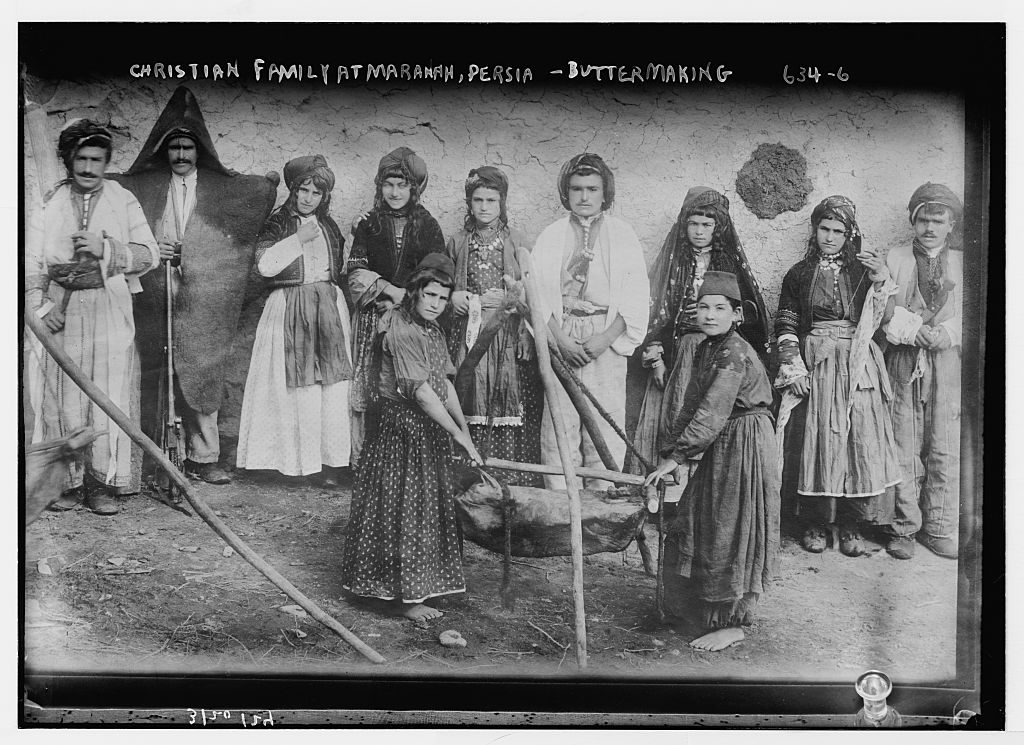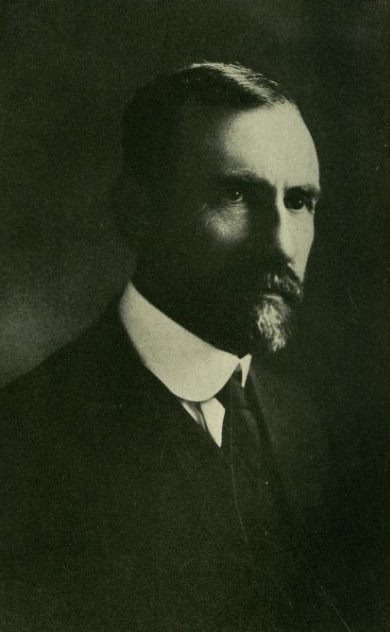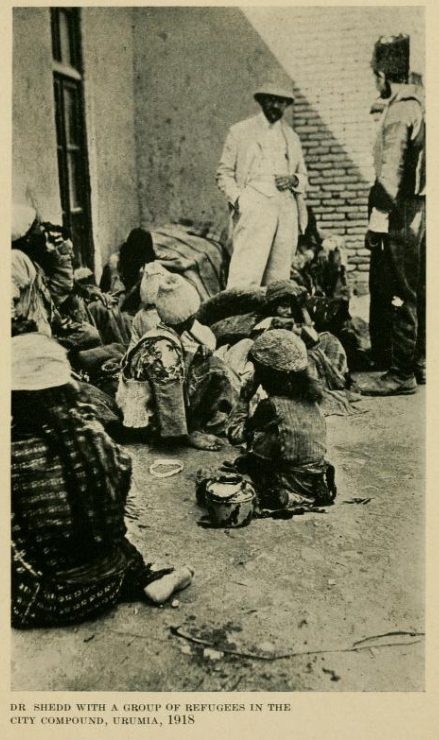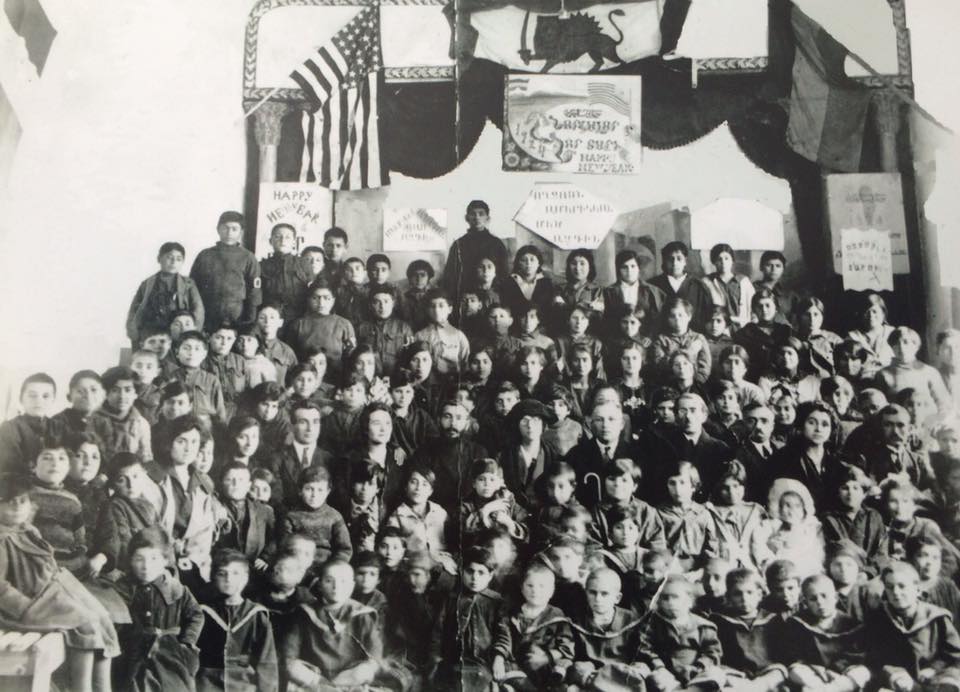Caught Between Empires: Near East Relief in Persia
Persia (modern-day Iran) was a key area of Near East Relief’s work with Assyrian Christians — yet this part of the relief effort has been largely overlooked. Let’s rediscover the history of this fascinating region.
Special thanks to NERHS intern Casey Edgarian, who helped to research and write this Dispatch.

Assyrian refugees on the road back to Tabriz. Near East Relief provided refugees in Persia with food, clothing, and employment. From The New Near East, May 1922.
Urumia, Persia: 1918. Dr. William A. Shedd watches as the once-vibrant city of Urumia (now Urmia, Iran) collapses around him. The American theologian, statesman, and educator was born in Persia. He has spent most of his life as a missionary to the Assyrians of this province.
But the Russian Empire, which once maintained law and order in the region, is crumbling. The Persian government is powerless. The threat of an Ottoman invasion looms on the horizon. What would become of Dr. Shedd and the indigenous Christians of Persia?

Christian family making butter in Marama, Persia, c.1900. Library of Congress

A DIVERSE AND FERTILE LAND
In the early 1900s, northwest Persia was an abundant and verdant land. Persia was a neutral country bordered by two vast empires: the Russian Empire to the North and the Ottoman Empire to the West. The fertile land produced valuable crops, including grains, fruits, and cotton. The Russian Empire maintained a political and an economic interest in Persia. Russia had even built a modern railroad to the city of Tabriz for easy access to Persia’s plentiful resources.
Northwest Persia was home to many religious groups. Most people were Azeri Shia or Kurdish Sunni Muslim. In 1900, there 76,000 Assyrian Christians in northwest Persia, including Chaldean Catholics and Nestorians. There were 230,000 Armenian Christians scattered throughout the country. There were also smaller communities of Persian Jews and Yazidis.
The minority religious populations were largely autonomous. They practiced their religions with little to no restriction from the central government. The various ethno-religious communities coexisted with comparative ease. Unfortunately, all of this was about to change.
Right: Russian soldiers in Persia, c. 1910. Library of Congress.

SAFETY IN THE MISSIONS
The Ottoman Empire entered World World War I in 1914 and invaded the Caucasus region. The invasion cut off supply routes to Persia, and threatened the Russian Empire’s commercial interests. In January 1916, the Russian army evacuated the large city of Urumia. More than 12,000 native Christians fled across the Russian border on the heels of the retreating army. Many refugees perished along the way from starvation, typhus, and exposure.
Urumia’s remaining population was unarmed and unprotected. The Ottoman army had driven thousands of Christians out of Ottoman-controlled Van, Mardin, and Diyarbekir and into Persia. The city was vulnerable to attacks from nomadic Kurdish tribes. Roughly 15,000 Christians sought refuge in the region’s American missions, which had long served as centers for education and worship. Dr. Shedd (left) and his wife Mary ran one of the American missions. French missionaries rescued an additional 3,000 people.
By the time the Russian soldiers returned in 1917, 4,000 Christian refugees in Urumia had perished in the deadly winter. Urumia’s remaining Christians began the long process of rebuilding their lives, once again under Russian protection.
Left: Dr. William A. Shedd. From The Measure of a Man by Mary Lewis Shedd, 1922.
The excellent work of the Near East Relief committee has accomplished much; but a great deal more must be done, and done quickly, if the Christianity of the Near East, and especially of Mesopotamia and Persia, is to be rescued from immediate and total destruction.

INVASION AND DESTRUCTION
This protection was short-lived. Battles on the German, Austrian, and Ottoman fronts were depleting Russian resources. It seemed inevitable that Russia would abandon Persia once again. The Russian army faced two choices: evacuate the threatened population, or leave them to fend for themselves in the face of the advancing Ottoman army. The Russian army chose the second option. In August 1917, the Russian forces left Urumia for a second time.
The refugees, now armed with Russian weapons, were left behind.
Although outnumbered and out-armed, the Assyrians and Armenians initially held the town square and defended the city. The Ottoman army captured Urumia and cemented its hold on northwest Persia. The effect was immediate and deadly. Persia was cut off from the outside world. The once-fertile region fell into starvation. Unable to send volunteers into the war zone, Near East Relief sent financial donations to missionaries in Persia.
Near East Relief is endeavoring to provide work for [the Assyrian] people in Tabriz, until they can find places to farm in the village, and the long arm of charity is caring for their orphans.

THE FLIGHT FROM URUMIA
Missionaries like the Shedds became the first Near East Relief workers in the field. Relief workers fed 30,000 famine-stricken people in Teheran alone. Feeding stations in provincial town and rural areas saved thousands of additional lives. The Ottoman and Kurdish forces drove the remaining Christians out of northwest Persia. Dr. Shedd and his wife Mary accompanied the Christian refugees, many of whom had already fled from Ottoman soldiers in Van and Salmas.
The Shedds were just two people among the 70,000 Christian refugees leaving Urumia. The refugees traveled on foot, on donkeys, and with ox carts through the treacherous mountains of western Persia. Thousands of refugees succumbed to hunger and disease. Dr. Shedd contracted cholera during the journey. He continued to travel and protect his fellow refugees. Dr. Shedd succumbed to the dreaded disease near Sein Kula — just short of safety in British territory.
Twenty-five days after leaving Urumia, the survivors arrived in the southern city of Hamadan. The refugees traveled an astonishing 320 miles — greater than the distance between Philadelphia, PA and Boston, MA, and 100 miles longer than the trip from Los Angeles, CA to Fresno, CA.
Right: Dr. Shedd with refugees. From The Measure of a Man by Mary Lewis Shedd, 1922.

THE RELIEF EFFORT INCREASES
Near East Relief was one of several organizations working in Persia and Mesopotamia (now Iraq). By 1919, there were more than 50,000 refugees in Baghdad. Most of them had fled from Urmia, Salmas, and Van. Many had been displaced more than once. There were 50,000 more in the Mosul area, 5,000 in Hamadan, and more than 10,000 in greater Tabriz. Even more refugees had fled to the Russian-controlled Caucasus.
Near East Relief operated orphanages and feeding stations in 6 Persian regions. Relief workers organized the refugees into partially self-supporting industrial camps. In Tabriz, refugees received food in exchange for labor. Refugee builders embarked on a variety of urban improvement projects. New buildings helped the city to recover from the recent destruction of the War years. Refugee laborers paved nearly all of the roads in Tabriz. Refugee women sewed clothing and blankets for orphans.

ORPHANAGES OF PERSIA
There were fewer orphans in Persia than there were in other areas of the Near East. While Ottoman Christian families had been separated under the Tehcir Law, families in Persia had been permitted to stay together. Relatives had quickly assumed responsibility for orphaned children. Near East Relief maintained small orphanages at Tabriz, Hamadan, and Kermanshah for those children who did not have surviving family members. The orphans were mostly Assyrian and Armenian.
Tabriz was the site of administration for all of Near East Relief’s work in Persia. Susan J. Shedd (daughter of Dr. William Shedd and Louise Wilbur Shedd, who had died in the field in early 1915) made international news when she led 400 orphans to safety in Tabriz. Miss Shedd became the orphanage director for all of Persia. She married fellow Near East Relief worker Leo J. Richards.
Marjorie Wilson directed Near East Relief’s orphanage in Tabriz; she later married Tabriz-born foreign policy specialist Edwin M. Wright. Other Near East Relief staff in the region included Marion F. Rust and Beulah K. Rust, Mildred Hunting Wheeler, and Dr. and Mrs. E.W. McDowell.
WHY WAS PERSIA FORGOTTEN?
Most historians focus refugees and orphans in Anatolia, Greece, and the Caucasus. Persia is often overlooked, perhaps because the nation was technically neutral. Nonetheless, invaders and collaborators committed devastating acts of violence against the indigenous Christians. The ensuing refugee crisis took place under the cover of political neutrality.
Like the Armenians and Anatolian Greeks, the Assyrians were victims of a genocide that deprived them of their ancestral homeland and nearly decimated their population.

New Year's celebration at Tabriz Orphanage. Arshaloys Haroutounian is in the fourth row, third from the back. Hagob Hagobian is in the back row with his two brothers.
A STORY FROM TABRIZ ORPHANAGE
Near East Relief’s work in Persia was comparatively small, but it saved lives. By the time the Tabriz Orphanage closed its doors in 1928, relief workers had placed nearly 1,000 orphans with families. Let’s finish our exploration of NER-Persia with the story of two Armenian orphans who lived in Tabriz.
Hagob Hagobian and his two brothers grew up in Near East Relief’s Tabriz Orphanage. Hagob graduated as a teenager and found a job as a truck driver. The job paid well enough that Hagop began to think about getting married. He returned to Tabriz with the intention of finding and marrying a girl who was an orphan there. That is where he met Arshaloys Haroutounian. Arshaloys had received her surname at the orphanage; she never knew her original family name. She was working as a servant in a private home. The two young people married and settled in Tehran, where they raised a family. The Haroutounians moved to California after the Iranian revolution.
Hagob and Arsholoys’ granddaughter shared this story and photograph with the Near East Relief Digital Museum in celebration of her grandparents’ legacy.
Story and photograph courtesy of Ani Bagdasarian Semerjian.
SUPPORT NERHS!
Research like this is challenging and rewarding, and NERHS loves sharing these discoveries with you. But we cannot do it alone. Please make a gift to the Near East Foundation in support of NERHS’ historical initiatives! You can even make a gift in honor of a loved one.
Your donation allows us to research this important history, add materials to the Digital Museum archive, and share Dispatches like this with you.

Boys at the Tabriz Orphanage, c. 1925. From James L. Barton's The Story of Near East Relief, 1930.
